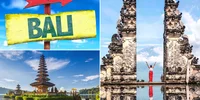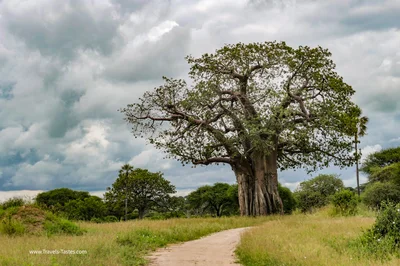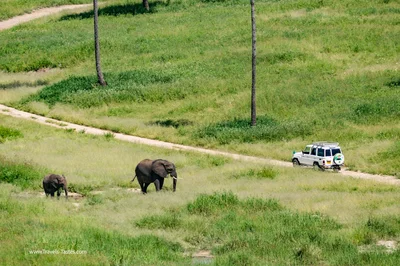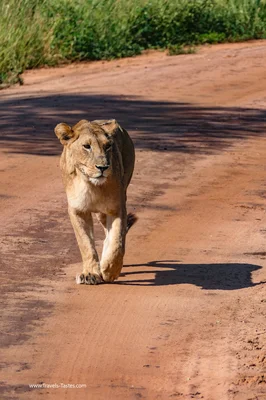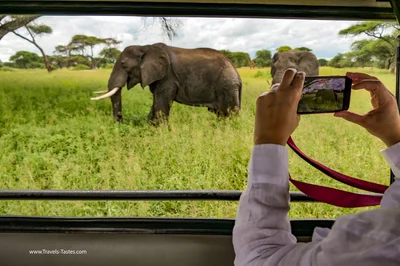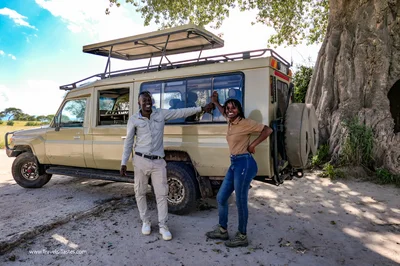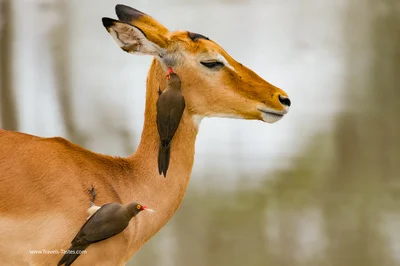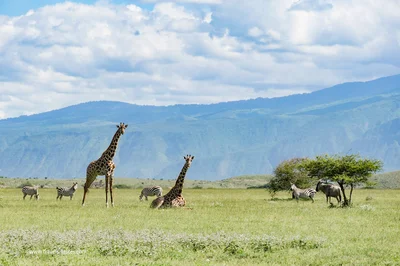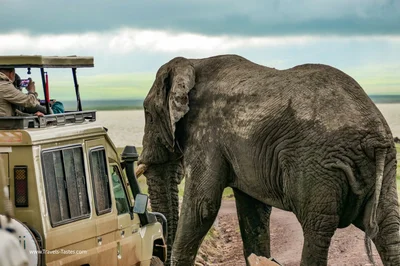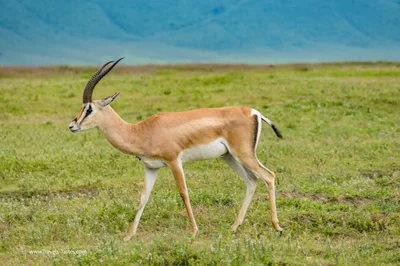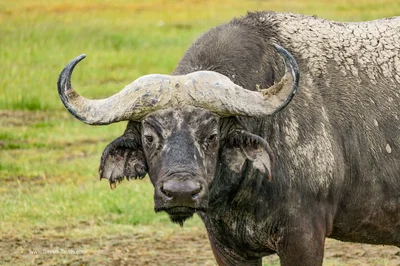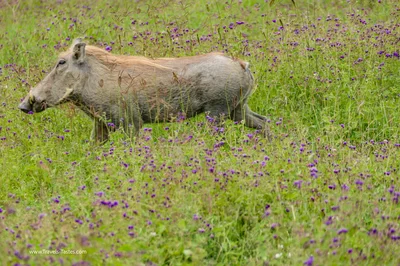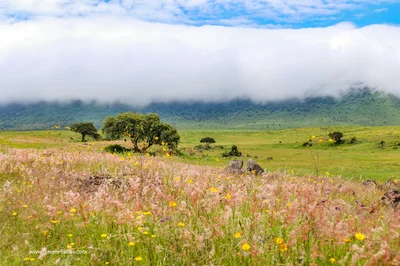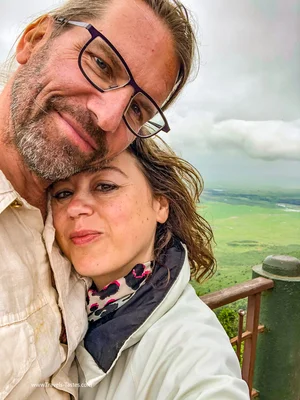Posted: May 1, 2023 | Last Update: 10. May 2023
*Rena's Travels and Tastes is supported by our readers. If you make a qualifying purchase through one of our affiliate links marked *, I may earn a small commission at no extra cost to you. Win-Win! Thank you <3
Rena & Nick's African journey
For the first time, we will be reporting live from our travel on this blog. We aim to update on a daily basis, so make sure you check back to see what we have been up to.
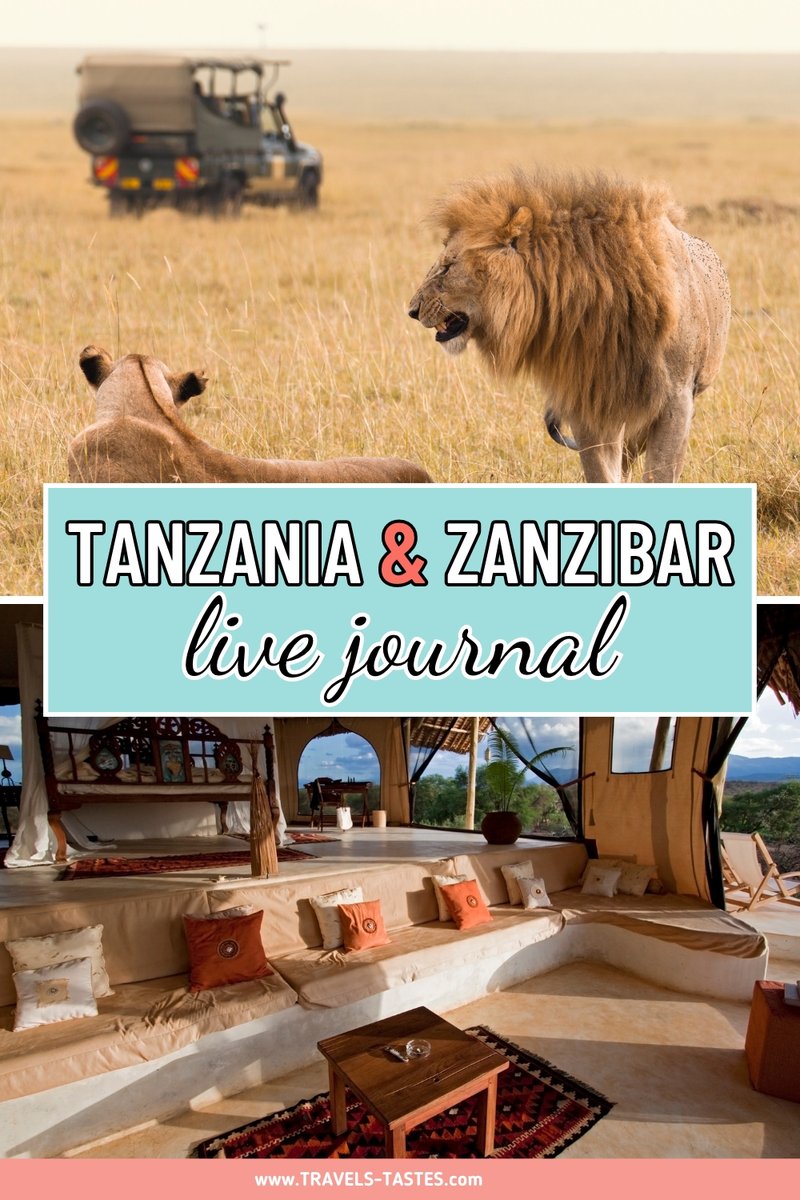
Are you a repeat visitor coming back for the latest update? Then you can jump straight to the last journal entry by clicking here!

Jambo (that's 'Hello' in Swahili)!
We are so excited for our Tanzania trip - it has been sooo long since my last tour to Africa.
This article will be a daily journalling of our adventures and experiences during our tour.
Please join us virtually <3
WE WILL BE UPDATING DAILY DURING OUR JOURNEY BETWEEN MAY 4TH AND MAY 16TH
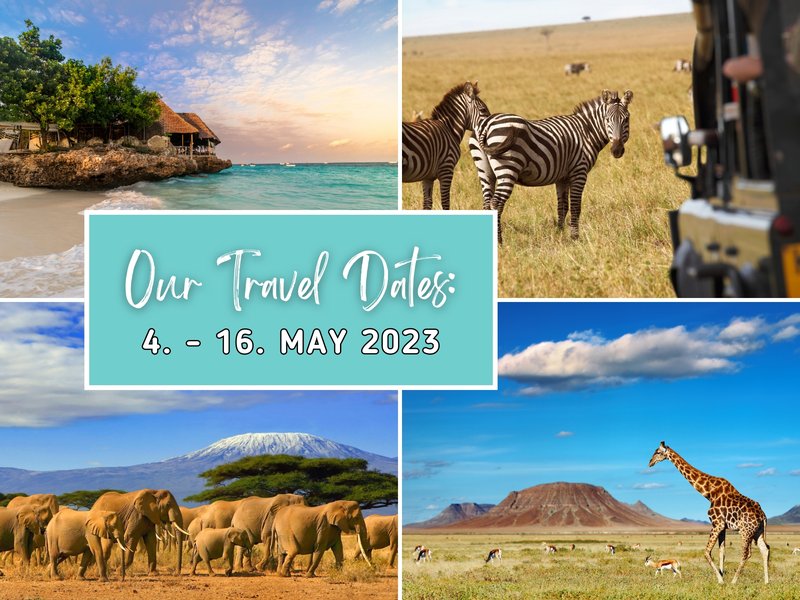
Preparation for our Tanzania trip
Time is running fast! It feels like only yesterday that Nick and I had a discussion about our travel plans for 2023 and decided to go on Safari in Tanzania!
The Ngorongoro Crater, also known as 'the cradle of mankind' had been on my bucket-list since I was a little girl.
And now my time has come: less than one week to go and still so much to do
But anyways, let me talk you through the process of getting to where we are right now:
Trip research and booking
Before booking, I looked for a number of criteria the tour had to meet:
- the route had to include the Ngorongoro Crater and Lake Natron
- accommodation needs to meet certain minimum criteria (4* hotels/glamping with own bathroom etc. I am too old and too picky to rough it, sorry)
- a few days on Zanzibar to relax and unwind after the safari
- value for money
We eventually found a trip that ticked my boxes with a German tour operator called 'Journaway'*.
If you are outside of Germany, you can easily book a similar trip with TourRadar*.
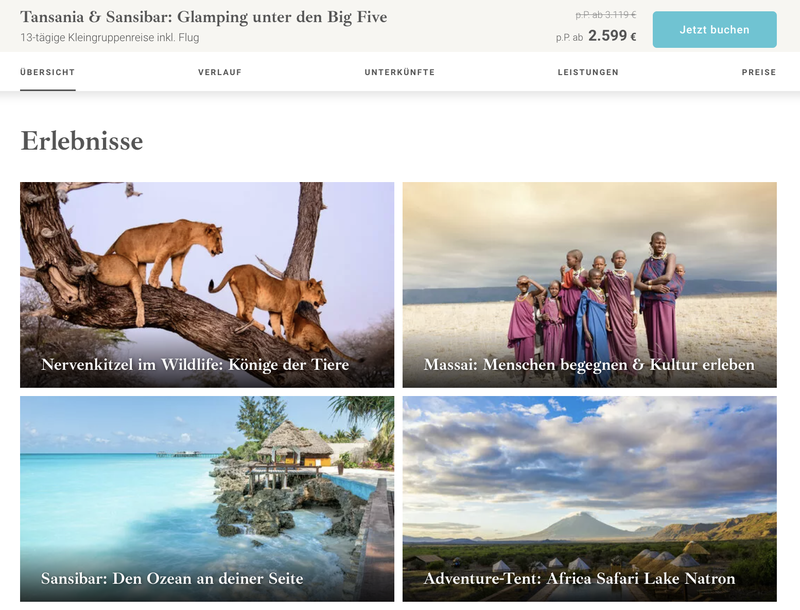
Malaria protection
There is no denying Tanzania is a high risk area for malaria.
Originally, I was very much on the fence as to whether or not to take the recommended prophylactic. There is a lot of talk about side effects as well as a number of tourists brushing the risk off because they did not get infected.
Some further research into the effects of a malaria infection, as well as medical professionals telling us the side effects are a bit of an 'echo of the past', helped us make up our minds: we have decided to take prophylactic medication (Malarone) as well as, of course, taking precautions to protect ourselves from insect bites by wearing long sleeves and using insect repellent.
We will let you know how that works out for us.
Climate and season
Tanzania is located just south of the equator, making it a tropical country.
It has two main seasons: dry and rainy, that alternate four times a year.
'Masika', Swahili for 'spring' is the first wet season of the year, running from mid March to May.
Apparently this year is wetter than the previous years, so we are bracing ourselves for more than an occasional shower.
Since I have been on safari to Kenya and South Africa before, I am however not too worried - on the contrary, I am looking forward to seeing lush greenery rather than dry shrubs (even though that means the wildlife will be more difficult to spot). However, rainy season also means baby animals, so exciting!
Wish us luck!
As for temperatures, I know it does get chilly at night in the bush - so we are preparing for lows of about 13°C / 55°F to highs of 32°C / 90°F on Zanzibar.
Getting a visa for Tanzania
Travellers to Tanzania are required to get a visa.
This can be purchased online on the Tanzanian immigration website but can take anything from 24 hours to several weeks to receive.
Nick chose this option and received his visa within two days.
Due to technical reasons, I was not able to complete my online visa application and will therefore go down the route of 'visa on arrival' at the airport.
To make the process a bit faster, I have already downloaded, printed and filled out the form beforehand.
Our Tanzania & Zanzibar travel route
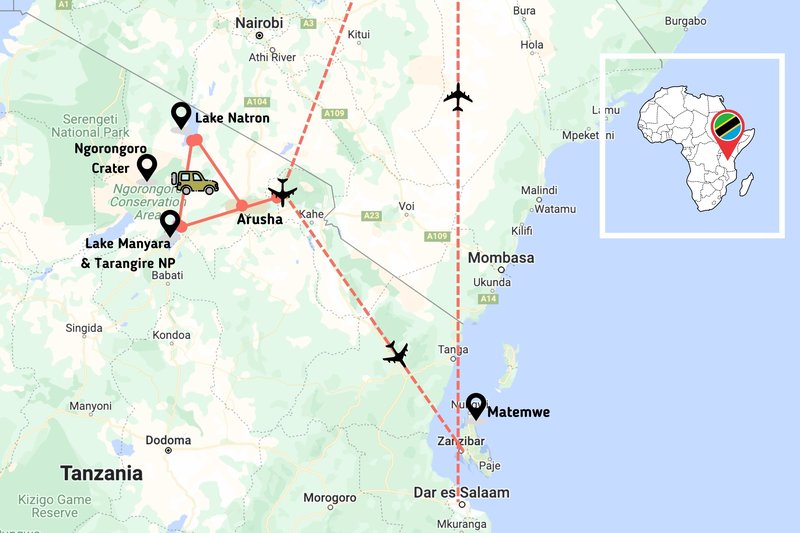
Accommodations: our tented camps and hotels
During our time on the mainland of Tanzania, both in Arusha and on safari, we will be staying in 'Africa Safari - Tanzanian Safari Lodges' accommodation:
Night 1 & 2: Africa Safari Arusha Lodge
Night 3: Africa Safari Camp Lake Natron
Night 4 - 6: Africa Safari Camp Lake Manyara
I have stayed in luxury tented camps before in Kenya and South Africa and am looking forward to sharing the experience with Nick.
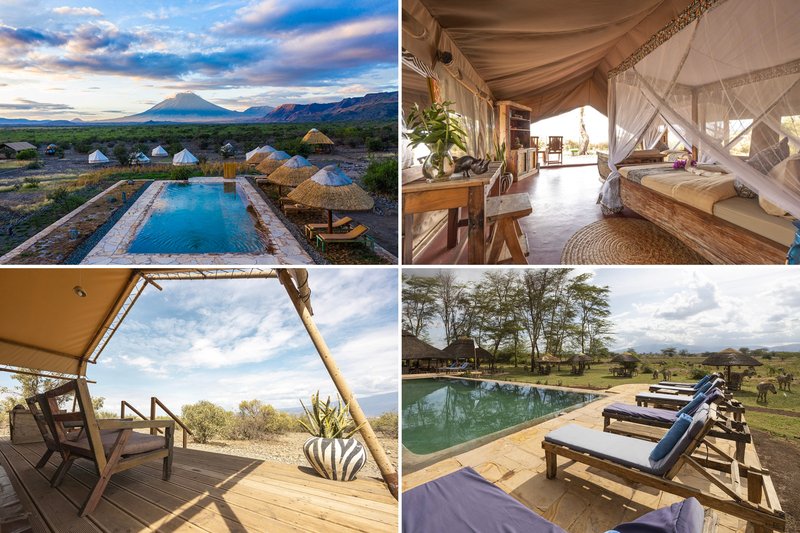
Photos © by Africa Safari Lake Natron (left) / Africa Safari Lake Manyara (right)
For our stay on Zanzibar, we have opted to upgrade and treat ourselves to two lovely 5* hotels:
Night 7 - 9: Kasha Boutique Hotel
Night 10 - 12: the brand new 5* Deluxe All Inclusive Emerald Zanzibar Resort & Spa
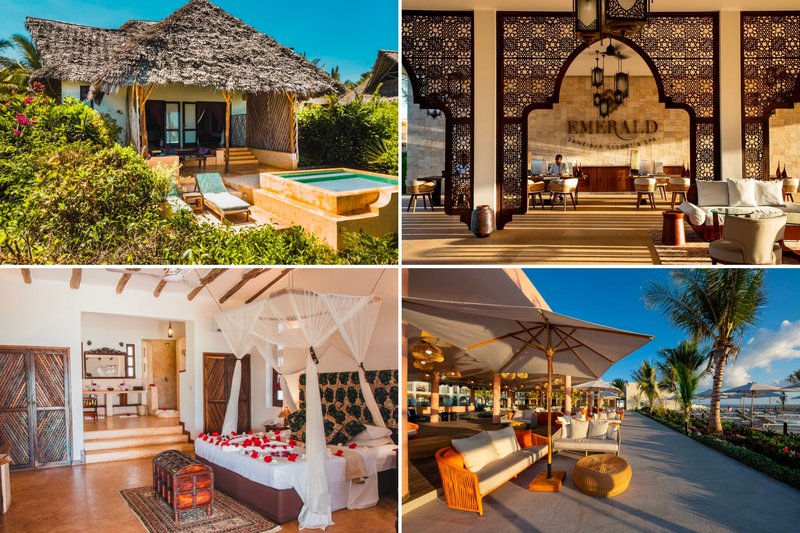
Photos © by Kasha Boutique Hotel (left) / Emerald Resort & Spa (right)
Day 1: Germany to Tanzania
Munich - via Istanbul - to Arusha
As I’m typing this, it’s 22:30h local time and we are on the plane (yes, I am that person who spends money on in-flight Wi-Fi), currently flying over the Red Sea.
The first leg of our journey, Munich to Istanbul, went super smooth and Istanbul airport is fabulous, on par with Doha and Singapore.
We are scheduled to land at 2 a.m., so I don’t think we will get much sleep either before landing nor after we check into the hotel (I don’t expect to get there before 3:30 earliest).
Day 2: Full day in Arusha
Jambo from Tanzania!
We have arrived and our adventure can begin.
Our plane landed at 2am and everything went super smooth: visa, immigration and luggage were done within minutes. I’ll write more about the process later.
After just four hours of sleep, since we didn’t arrive at the hotel before 4:15am, the day unfolds in a relaxed way. But if you know me, you also know that I can’t sit still for longer than an hour before FOMO gets the better of me. So we decide on a trip to Arusha town: it’s a rough 30 minutes drive by 4x4 because there is no road - just knee deep potholes in a dirt track.
But it’s worth it: we visit the Maasai arts and crafts market where the local tribes sell their beautiful wood carvings, paintings, clothes, bags and jewellery. A bit overwhelmed by all the impressions and everyone being so focused on us (we’re the only tourists there), we continue our trip to the African Cultural Heritage Center, where we look at jaw dropping art.
Back at the hotel we start getting to know our tour group (we’re a total of three couples) and are fairly certain the next days will be great fun and loads of amazing experiences.
Despite our accommodation being rather moderate, service is impeccable. The Africa Safari Lodge team go above and beyond (they even call our driver while we’re out in Arusha to check whether they should keep our lunch meal warm in case we’ll be late but hungry, how amazing is that?!) to look after their guests.
TL;DR day 1:
Being back in Africa feels like coming home - I’ve missed it. I’m certain the next days are going to be fantastic.
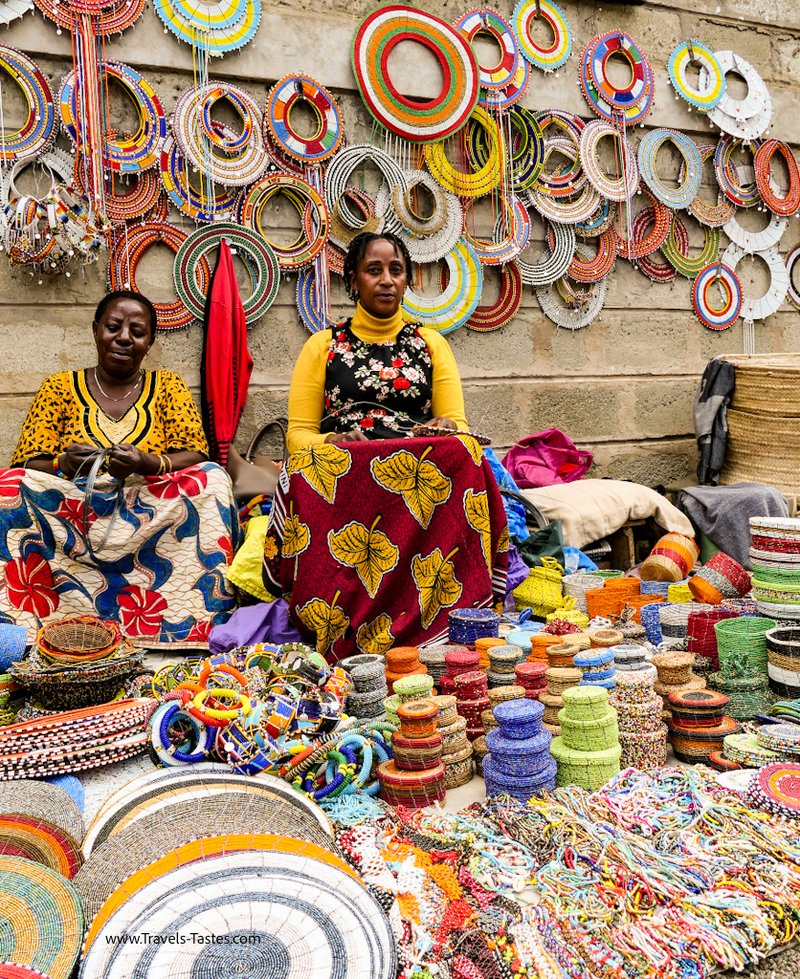
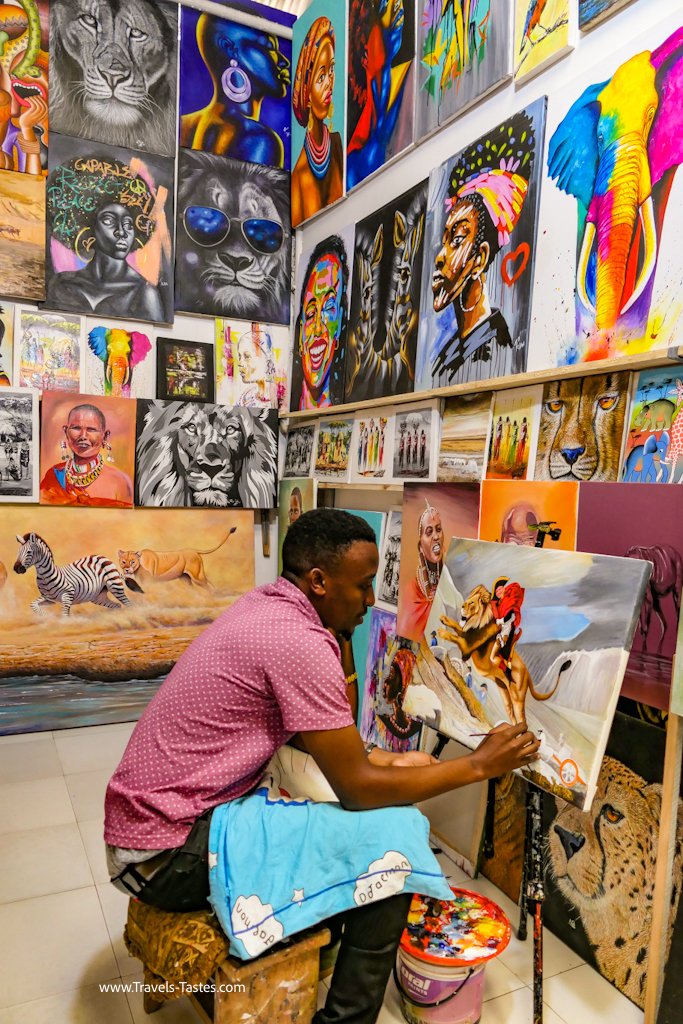
Day 3: Arusha to Lake Natron
A day of surprises draws to an end on the shores of Lake Natron.
In the morning leave the hotel about half past eight to head north towards the Lake. The drive is supposed to take about five hours plus breaks. Since we don’t have any further plans for the day, one is in a hurry, and the African lifestyle of „pole pole“, slowly slowly, is our new mantra.
The first surprise while boarding our safari vehicle: there’s not enough room for all of the luggage our group of six have between us. Hakuna Matata, no problem, because luckily a second group is headed the same route and can take some of our bags.
.
About half way, Nick spots an elephant in the bush by the road - a huge bull. After some back and forth (our driver, thought we were pulling his leg about the elephant - Christopher, if you’re reading this, you will never live this one down ;-)) ) we get up close to the massive animal.
Onward we go through Maasai territory and we see members of the tribe who still live their authentic traditional way of life, herding their livestock. You can easily spot Maasai from afar, due to their colourful, mostly red plaid, garments, their beaded jewellery and the ubiquitous stick/spear.
The open plains are ideal grazing grounds, not only for the Maasai livestock but also for gazelles, wildebeest, zebras and giraffes that we keep seeing more and more of. Not long and we have opened the Jeep’s roof to better enjoy the views.
Time flies when you are having fun, but as we arrive at the camp, we can’t deny being glad to be done with the bumpy rides for the day.
While checking in, we are met with yet another surprise: the Africa Safari Lake Natron‘s camp open structure restaurant is built right next to an acacia tree that’s home to dozens, if not hundreds, of weaver birds - we get to see them up close and at eye level, it’s amazing.
But now it’s time for some relaxation by the pool.
There is not much time for us to spend on our beautiful newly built bungalow, because dinner awaits. If we hadn’t known already, it becomes very obvious here that it’s off season: there are no other guests apart from us.
And of course a day like today can’t end without yet another surprise: the whole staff of the camp sing and dance for us during dinner.
I will post a video soon.
But for now good night, lala salama.
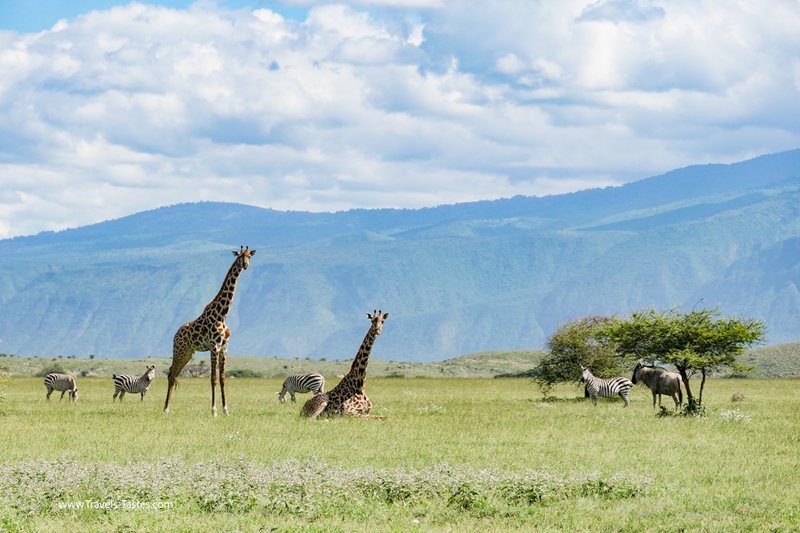
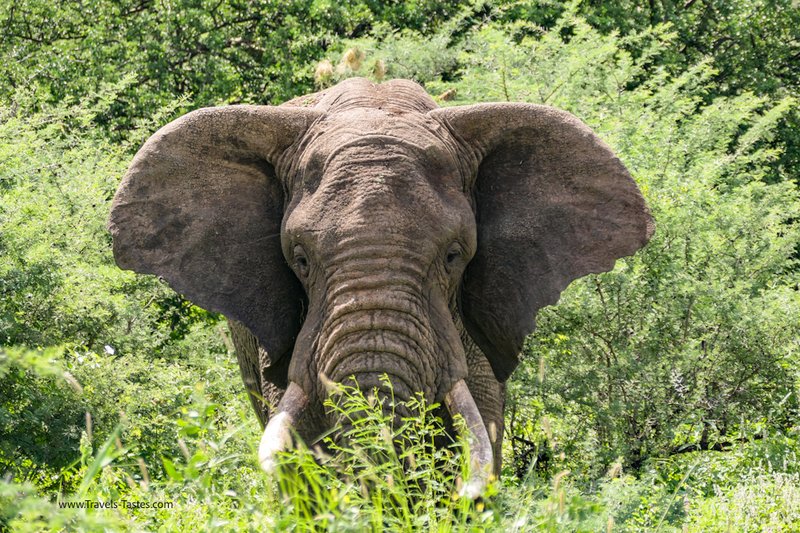
Day 4: Lake Natron and Lake Manyara
Sunrise safari over Lake Natron
As per our itinerary, we will have an early start in Arusha to catch the sunrise over Lake Natron - pink flamingoes galore!
Lake Natron is a highly alkaline lake in northern Tanzania, known for its red-coloured waters and the famous pink flamingoes. The birds are attracted to the lake because the high level of sodium carbonate in the water provides an ideal environment for the algae they feed on.
Day report
Morning has broken over Lake Natron - we are greeted with a spectacular sunrise.
After breakfast a Maasai guide takes us to see the flamingoes. Sadly it’s not breeding season - between July and October, flamingoes from all over the continent flock to Lake Natron for mating and to hatch their young. Did you know every flamingo only lays one egg?
As we are on foot, we need to take good care not to touch the highly alkaline water of lake.
On the way, our two Maasai warriors talk to us about their lives - I could listen to them for hours and ask them every question I can think of: about their changing lifestyle from a pastoral people to a settled life, the importance of their cows, religion and spirituality as all as rites of passage from boys to warriors. Maybe I’ll write more about their answers later.
After lunch it’s time to say goodbye to the team of Africa Safari Lake Natron. Desire only having been here for one night, we can say for sure that Edwin and his team bent over backwards to make us feel welcomed and our stay as pleasant as possible.
Service, food and the brand new bungalows were amazing.
The water in the pool was the perfect juxtaposition to the scorching heat at Lake Natron.
In the afternoon we drive to our next camp at Lake Manyara.
Tomorrow we will do a “proper safari” in Tarangire National Park.
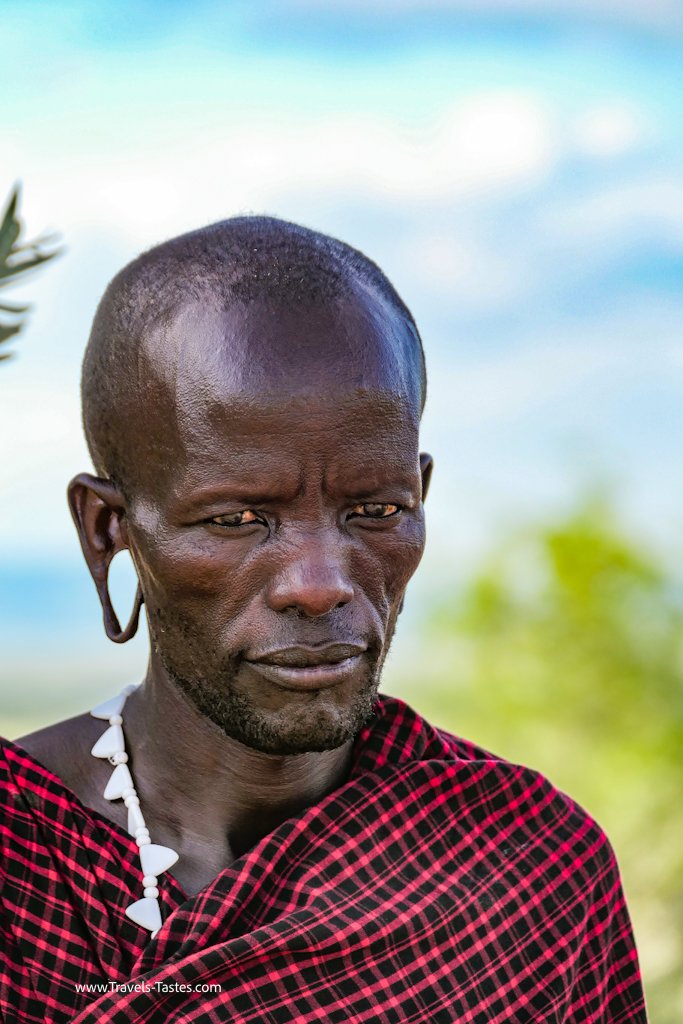
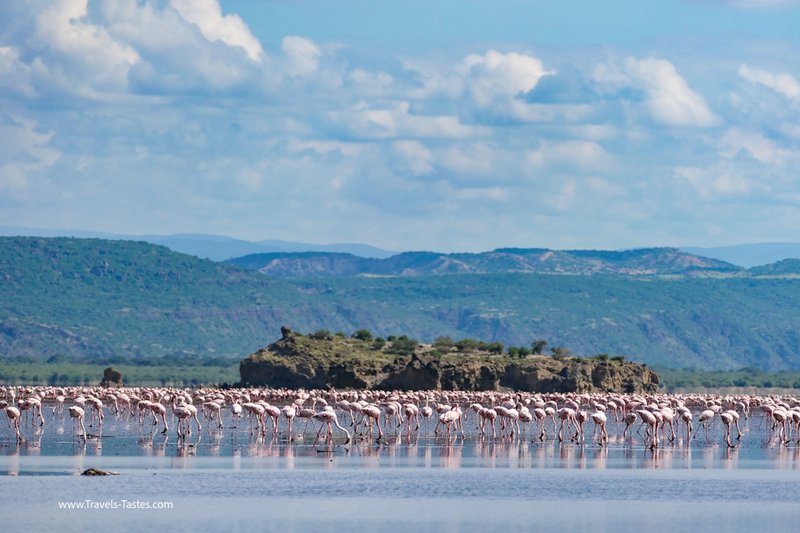
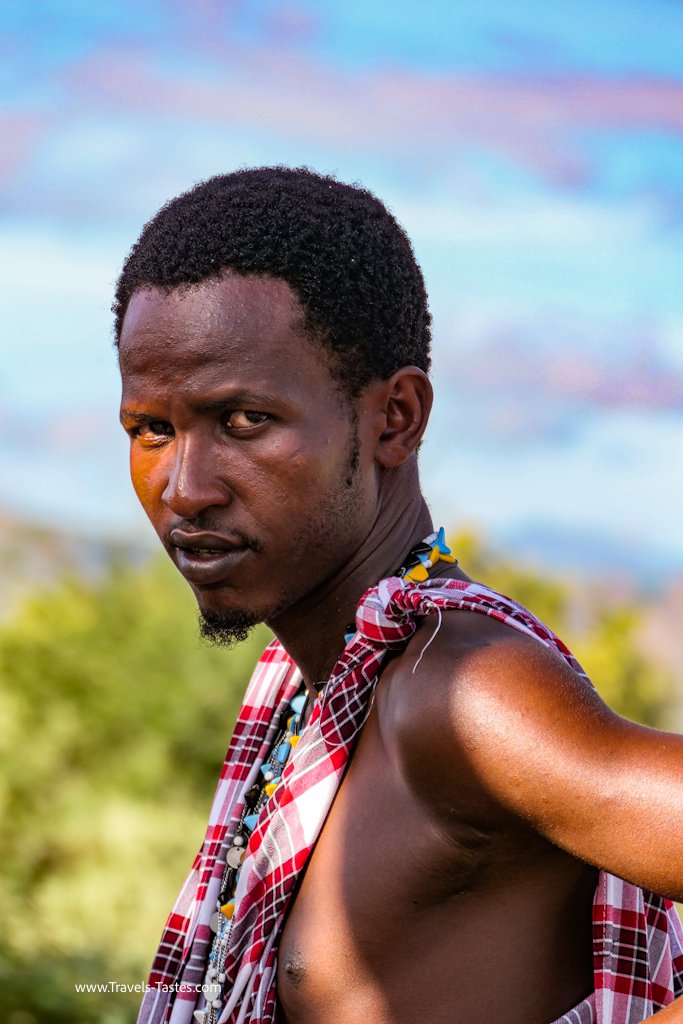
Day 5: Safari in Tarangire National Park
It's 2 o'clock in the morning as I’m writing down the events of the day. Sleep is currently out of the question: a storm is raging outside, tugging at the canvas of our glamping tent, and inside, I'm still very stirred up from the day's experiences.
So I'll sleep another time and instead write about our incredible day on safari:
Silke and Alf from our travel group join us, so there are four of us today.
Irene, the founder of Bat-Eared Fox Tours, and her brother Pius pick us up at 8 am. Before heading to Tarangire National Park, we first pick up the lunchbox they organized for us.
But now, full steam ahead, safari awaits! - It takes us just over an hour from our camp at Lake Manyara to the entrance of Tarangire National Park.
The park is also known as the "elephant paradise," as so many of these magnificent creatures live here.
And indeed, we soon see the first impressive examples not far from the gravel road. Three more safari jeeps are parked a little further away at the roadside - a sure sign that there is something to see there. As we approach, we recognize a large elephant bull right at the roadside and the rest of the herd about 50-100m away. Gradually, more cars join us, and as we take photos, the herd gets closer and closer. It becomes clear that they want to cross the road, but the line of cars makes this a bit difficult. We can hardly believe our luck when two young bulls choose to pass right behind our jeep - they come so close to us that we could have touched them! Absolutely crazy! During all my safaris, I have never been so close to elephants.
We are completely ecstatic - this alone has already made the tour worthwhile! But this was only the beginning.
It takes less than half an hour until another crowd of parked jeeps announces the next sighting: a lioness is stalking through the tall grass. At first, we only see her ears. A herd of impalas stands a little further away on the other side of the road, completely oblivious of the threat - are they her next meal? She is at least moving in that direction, but the distance is still too far, even though the lioness is lurking perfectly camouflaged in the grass. Just as we are about to change the position of our jeep, she suddenly decides to climb a termite hill to get a better view! The sight we are presented with is sensational - as if she was being paid to pose! After some time, a waterbuck approaches from the other direction, and the lioness decides to follow him - away from us and into the thickets. Good hunting, my beauty, and thank you for the great moments.
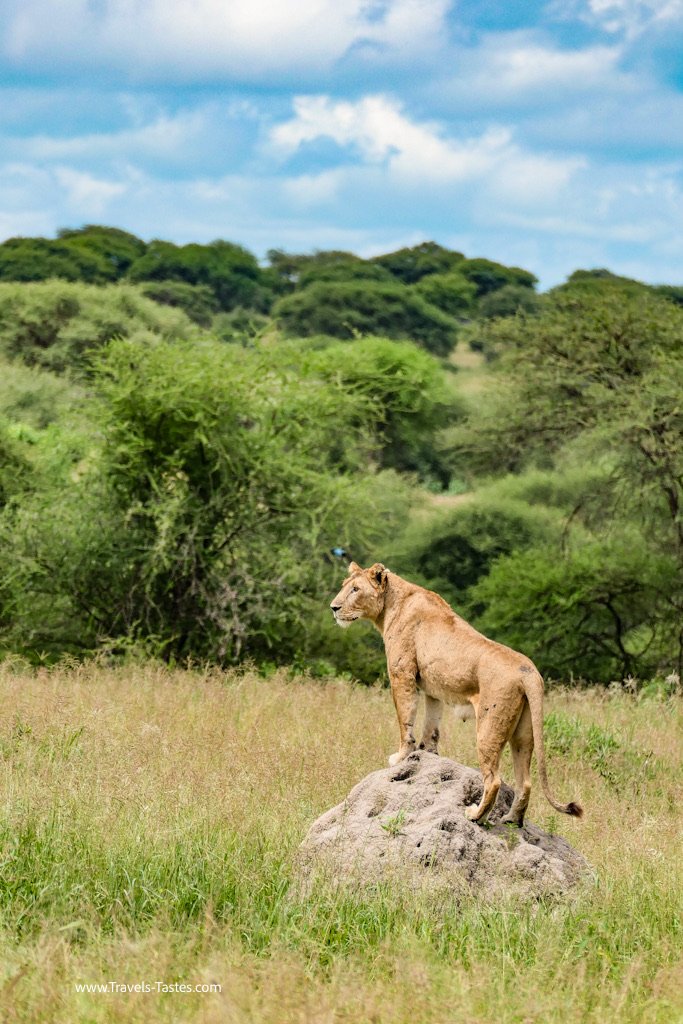
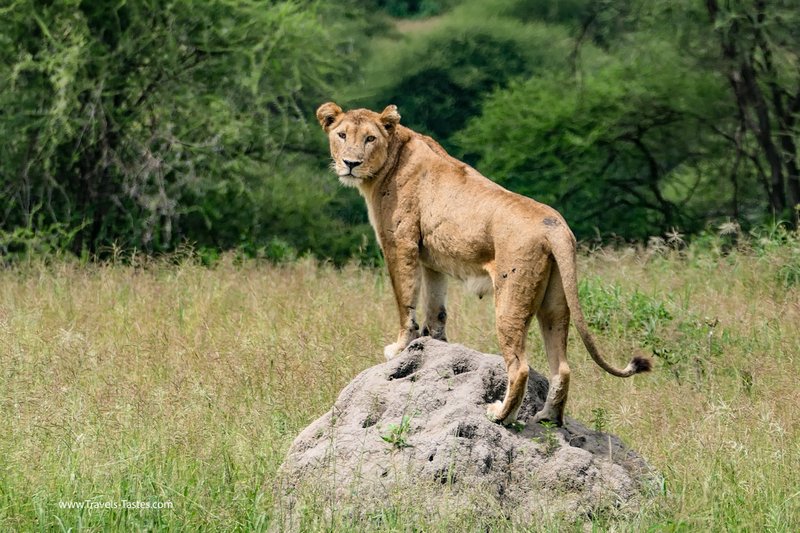
We pass countless other animals: elegant impalas, dozens of giraffes, colorful birds, etc. on our way to the picnic area, as it is now lunchtime.
Irene and Pius had not brought a classic "tourist food" lunchbox as I requested authentic Tanzanian dishes instead: maize with beans, plantain, chicken stew, etc. We enjoy our lunch break among six of us.
Then we drive on to an ancient baobab tree, where we can get out and touch it. On the way back, I spot a lioness walking calmly towards us in the middle of the road. She avoids our jeep, but comes as close as one meter. We can't believe our luck.
I could write on for hours, but it's already 3 am, and I need to sleep now.
One thing is obvious, though: none of us will forget this safari. A thousand thanks to Irene and Pius, who made all of this possible! If you are ever in Tanzania, please book a safari with them. You would be supporting a very brave Maasai girl in a male dominated society and industry!
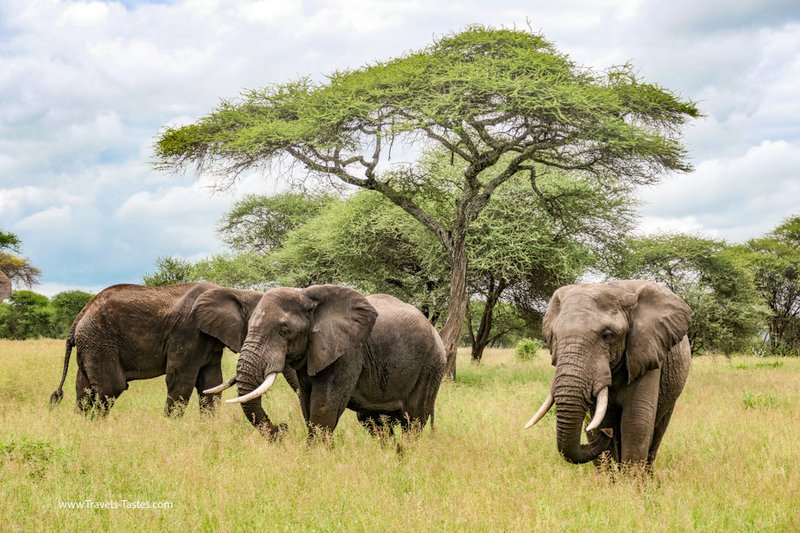
It will take me a few days to edit and upload videos, in the meantime please check my reel on Facebook.
Day 6: Ngorongoro Crater
This site has been on my bucket list for decades and I cannot wait to finally experience it live!
If you are not familiar, let me explain what makes the it so exciting and unique:
The Ngorongoro Crater in Tanzania is an incredible natural wonder that has been around for over two million years. This massive volcanic caldera was formed when a huge volcano erupted and then collapsed on itself, creating a vast circular depression that is home to an incredible ecosystem and some of the world's most fascinating wildlife.
Some call it the "eighth wonder of the world" while others refer to it as the "cradle of mankind", as it is home to some of the earliest evidence of human evolution. The Ngorongoro Conservation Area, where the crater is located, is a UNESCO World Heritage site.
Standing over 600 meters high, the crater walls create a natural barrier that has led to the formation of a self-contained ecosystem within its boundaries. The area is teeming with diverse wildlife, including the famed "Big Five" (lions, elephants, leopards, rhinos, and buffalo), as well as hundreds of other species of mammals, reptiles, and birds.
Our day in Ngorongoro Crater
Today I’m writing from the airstrip in Arusha where we are waiting for our flight to Zanzibar.
After all, I owe you (and myself) a wrap-up of yesterday’s safari in Ngorongoro Crater , right?
What a day, let me tell you!
We start the day at stupid o’clock: as you know from my previous journal entry, I didn’t sleep that night. Dawn is upon us with a mighty rainfall - hardly unexpected during rainy season. As we walk to the restaurant for breakfast, wearing rain ponchos no less, we feel a bit cold, too. We leave the camp at half past seven, it’s a 1.5 hours drive to the crater after all.
The crater ridge looks very much like the rain forest in, say, Uganda: we are at an elevation of 7500 feet, and it’s so rainy and foggy that we can barely even see the road. Such a pity, we would have liked to admire the giant trees of the rainforest that fly by like grey ghosts. But we learn this is the typical local weather and it will clear once at the bottom of the crater.
On the drive there we descend about 2000 feet. The view that unfolds before our eyes is spectacular: the fog creeping over the lush green crater ridge in thick clouds, while the caldera is a sea of green grass and yellow and purple flowers (we learn they are endemic, but pretty regardless).
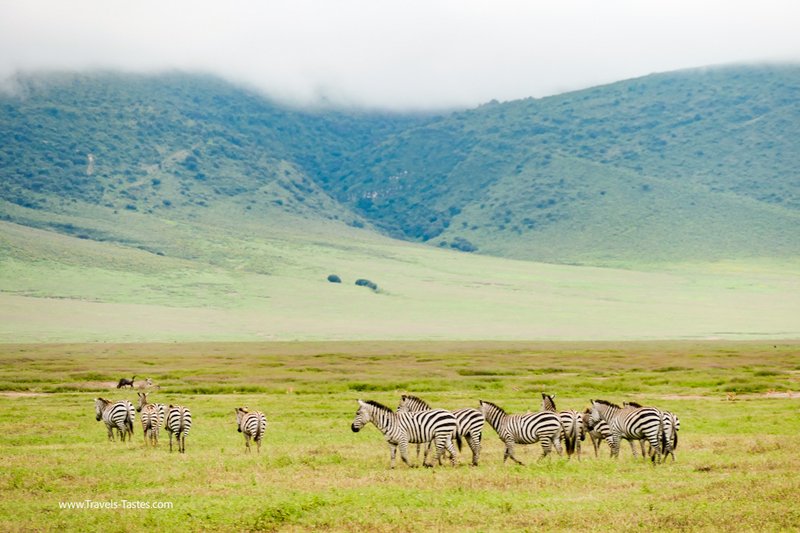
„And what about the animals?“ you may ask. Yes, well, the animals … The Ngorongoro Crater features the highest density of wildlife on the planet, and we certainly did witness that: wherever you look you see animals.
Since the caldera is flat and only has trees in a very tiny corner, you can see for miles. There is not a single direction you could look in and not see an animal, even if only far away.
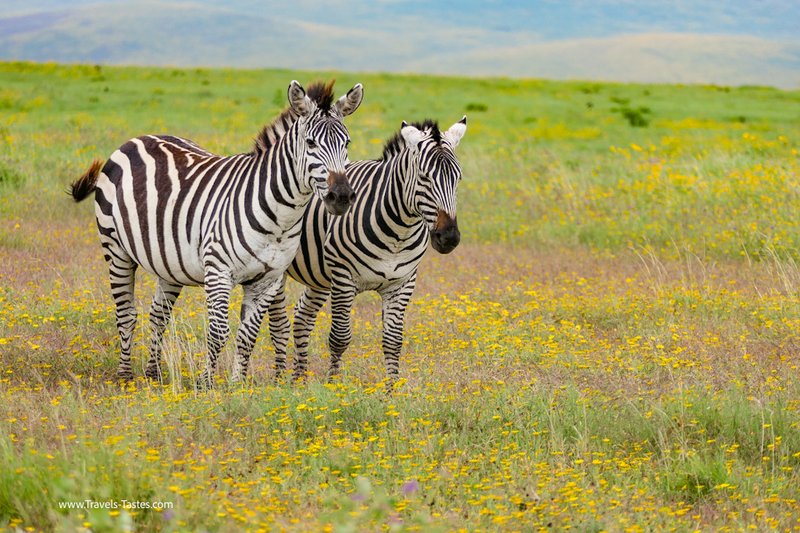
We spot elephants, many of whom are solitary males , herds of zebra and wildebeests living in symbiosis, gazelles and more.
One hyaena has collapsed right by the roadside: his belly stuffed so full he’s almost immobile. A hundred yards away, the other members of the pack are still gorging themselves on an unidentifiable carcass.
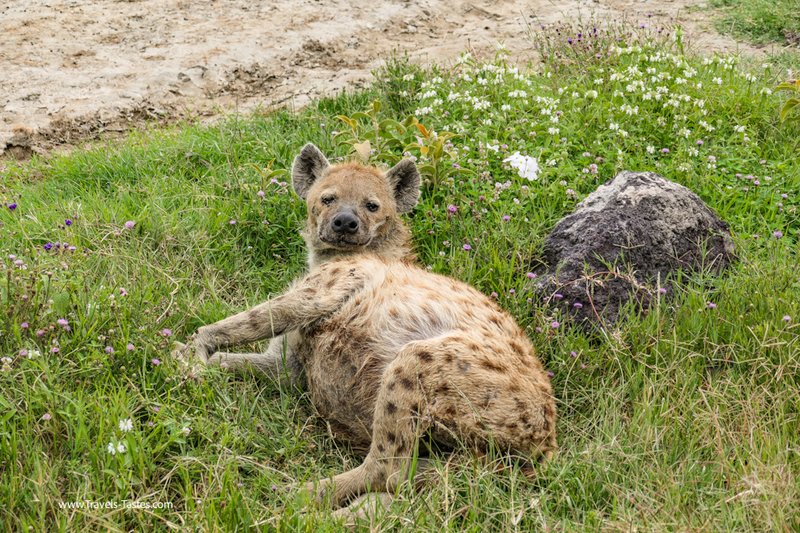
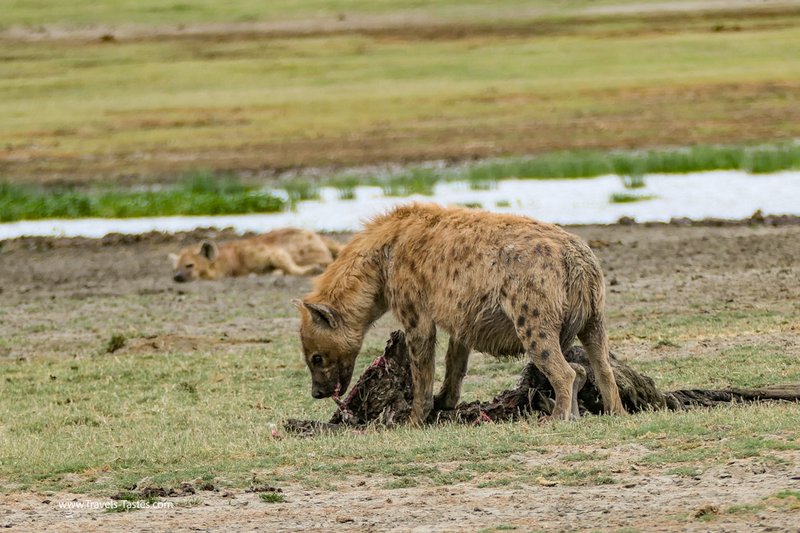
Radio communication picks up and Christopher, our driver, puts the pedal to the metal: lions with fresh kill! And indeed, as we arrive, we see a lioness and her two young cubs of about six months tucking into their prey, a wildebeest.
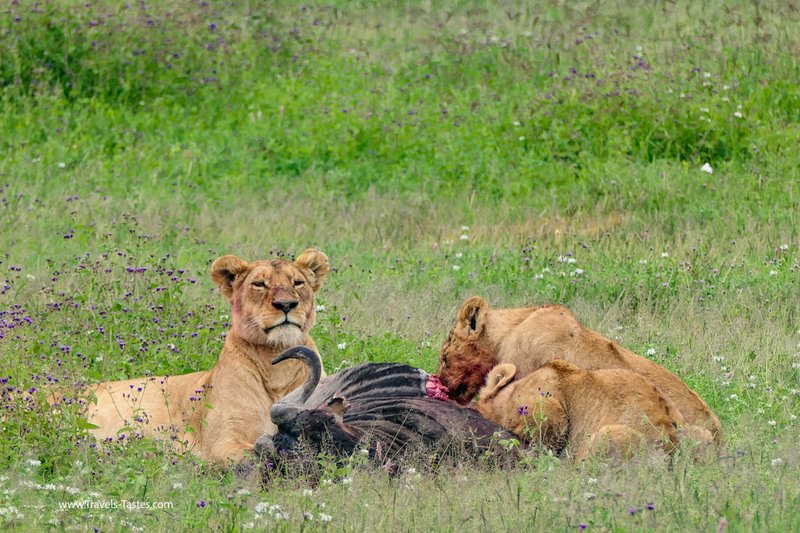
Next we come across a pride of three young lions by the roadside - much closer, albeit less photogenic.
So that’s elephants, lions and water buffalo down, only two more to go for the „Big 5“: rare rhinos and elusive leopards, should be easy enough, right? *cough*
As luck has it, we actually do spot one of the few remaining black rhino in the distance (too far for a picture).
The leopard however remains unseen. I console myself that I’ve already seen the Big 5 in South Africa. And as for Nick - well, looks like we have to do another safari, right? I might or might not already have something in mind…
Please check the gallery at the bottom of this page for some photos
Day 7: off to Zanzibar
Lake Manyara to Kilimanjaro Airport, flight to Zanzibar
Day 8: Cheetah's Rock, Zanzibar
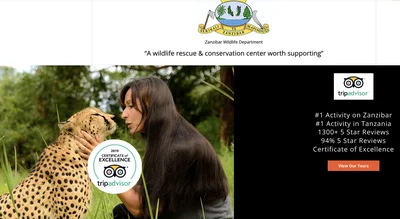
April 28th:
One of the main attractions on Zanzibar is Cheetah's Rock, a wildlife rescue and conservation center where you can get up close with some of their amazing rescued animals.
I can't wait for this experience - it's not cheap, but I know I would kick myself forever if I did not book it.
Day 9: Cooking Class & Stone Town Tour
For this day, I have booked what sounds like an awesome experience:
a cooking class with 'Mamas of Zanzibar'*.
Here is what they say about the activity:
"Karibu Kupika - Welcome to Cook!
We are a group of passionate Zanzibari women eager to share our rich cultural cuisines and traditional dishes with you! By joining us you will unlock a side of Zanzibar tourist don't get to experience. A community lifestyle in Zanzibar, that is authentic, educational, enjoyable, delicious and fun for all ages! You will get a hands-on training from our homes on how to learn how to cook authentic Zanzibari food Our menus has rich exotic island flavours and aromas overviewed by a professional chefs. Also please keep in mind that when booking this experience you will be supporting and empowering us directly, as Zanzibari woman."
The reviews on TripAdvisor were awesome, and we are very much looking forward to this experience.
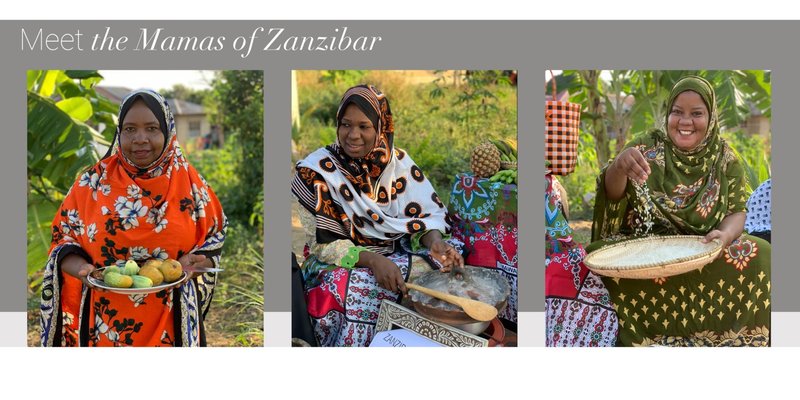
Photo © Mamas of Zanzibar
After the cooking class, we will explore Stone Town, die old part of Zanzibar city.
Day 10: Zanzibar
Today, we will check out of Kasha Boutique Hotel and transfer to the Emerald Resort & Spa.
Day 11: Emerald Resort & Spa, Zanzibar
Day 12: Our last day on Zanzibar

Do you like my content?
If you want to 'Buy me a coffee' and become a supporter, you help me cover the costs associated with running this blog.
Thank you <3
Related Posts
Comments
There are 2 comments.

